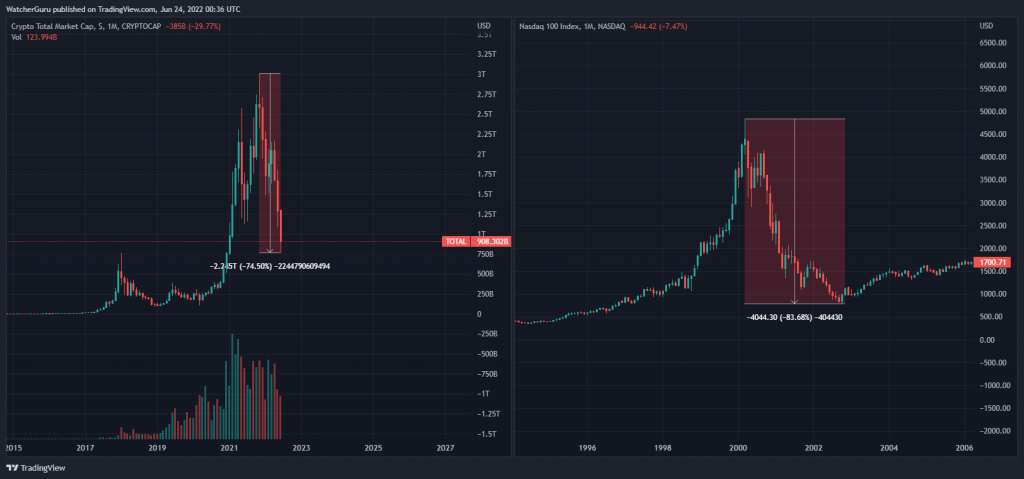Back in the day when the Internet was launched, the common man felt the whole ideology backing the tech be alienated. While a few accepted it with open arms almost immediately, the majority remained skeptical. Now, as far as crypto is concerned, we’ve been seeing something similar.
Adoption was scanty initially, and it took time for the curve to get steep. Even though crypto is not completely mainstream yet, it’s almost certain that the masses will get exposed to it in one way or another. Given the nature and scope of both these technologies, parallels have already been drawn. In fact, the bubble narrative has been getting stronger of late.
Is the crypto bubble set to burst?
During the initial leg of the so-called dot-com bubble phase, the Nasdaq rose by triple-digit figures between 1995 and 2000. During this hype period, thousands of IPOs were released. The excitement and greed surrounding tech stocks drove the index to historically high levels, but then investors started predicting the downfall.
Eventually, the market did crash, and companies that didn’t have fundamental backing were forced to exit the space. During the bubble popping phase, prominent companies that have trillion-dollar valuations today also ended up shedding around 50-80% of their respective values.
From noting a full-fledged ICO boom phase to registering a presumably long macro bull run that wound up last year, the crypto space has also seen its own ups. When compared to last November’s $3 trillion valuation, the crypto global market cap is currently down by 75% approximately.
This downfall has, notably, happened in a flash when compared to Nasdaq’s gradual phased-out dip. However, the intensity of the plunges has been quite congruent, and it shouldn’t be forgotten that crypto has always been this volatile.


The filtering out process in the crypto space has already started happening. Three prominent projects have been hard hit back to back in just a period of two months. Others have also been feeling the bite of winter, but have been able to manage so far. It’s fair enough to contend that this period is the litmus test for the crypto industry. Projects and coins that pass through this phase would reap the macro bullish fruit going forward.
In fact, a couple of days back, the Bank of England Deputy Governor Jon Cunliffe opined that the survivors of the ongoing crash have the potential to become the tech companies of the future, like Amazon, and eBay.
Speaking at the Point Zero Forum in Zurich on Wednesday, the U.K. central banker said,
“The analogy for me is the dot-com boom when $5 trillion was wiped off values. (…) A lot of companies went, but the technology didn’t go away. It came back 10 years later, and those that survived — the Amazons and the eBays — turned out to be the dominant players.”
He added,
“Whatever happens over the next few months to crypto-assets, I expect crypto technology and finance to continue. (…) It has the possibility of huge efficiencies and changes in market structure.”
Well, a couple of decades and multiple waves of a global pandemic later, we now know that the world would be handicapped without the Internet. While initially, it looked like the Internet was at the mercy of the world to get adopted, it wouldn’t be wrong to now claiming that the world is at the mercy of the Internet to sustain and thrive. Similarly, with time it would become obvious that the world needs crypto more than crypto needs the world.





